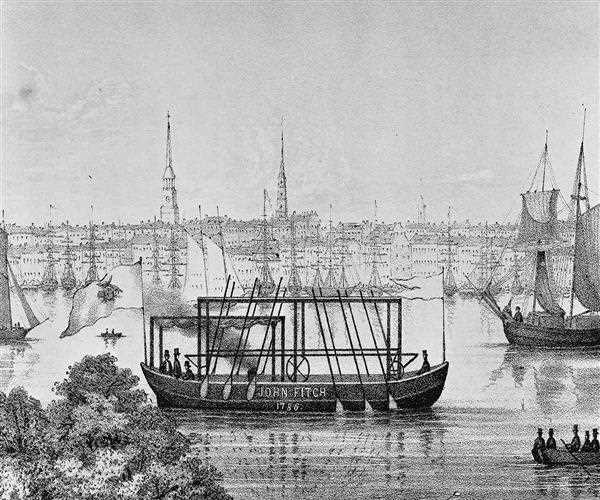The first steam-powered ship was invented in 1712 by Thomas Newcomen. Newcomen's engine was a reciprocating engine, which means that it worked by pushing a piston back and forth in a cylinder. The piston was connected to a crankshaft, which turned a wheel that was used to propel the ship. Newcomen's engine was not very efficient, but it was a major breakthrough in the development of steam power.
In 1769, James Watt improved on Newcomen's engine by adding a condenser. A condenser is a device that cools and condenses steam, which allows the engine to reuse the steam. Watt's engine was much more efficient than Newcomen's engine, and it made steam power much more practical.

The first steam-powered ship to be used commercially was the Clermont, which was built by Robert Fulton in 1807. The Clermont was a paddle steamer, which means that it was propelled by paddlewheels that were turned by a steam engine. The Clermont was a success, and it helped to popularize steam power for ships.
Steam power revolutionized shipping. Before steam power, ships were powered by sails or oars. Sails were dependent on the wind, and oars were limited by the strength of the rowers. Steam power made ships much faster and more reliable. This led to a boom in shipping, and it helped to connect the world in a way that had never been possible before.
Steam power was also used for military ships. Steam-powered warships were much faster and more powerful than sail-powered warships. This gave countries with steam-powered navies a major advantage in conflicts.
Steam power was a major technological breakthrough that had a profound impact on the world. It revolutionized shipping and warfare, and it helped to connect the world in a way that had never been possible before.
Here are some of the benefits of steam-powered ships:
- Faster: Steam-powered ships were much faster than sail-powered ships. This made them more efficient for transporting goods and people.
- More reliable: Steam-powered ships were not dependent on the wind, which made them more reliable than sail-powered ships. This was especially important for commercial shipping, where delays could be costly.
- More powerful: Steam-powered ships were more powerful than sail-powered ships. This made them more effective for military purposes.
Steam-powered ships had a major impact on the world. They helped to speed up the Industrial Revolution, and they played a role in many of the major conflicts of the 19th and early 20th centuries. Steam-powered ships were a major technological advancement that had a profound impact on the world.